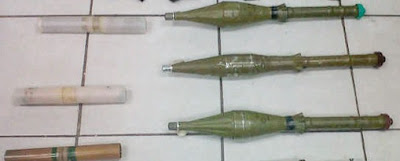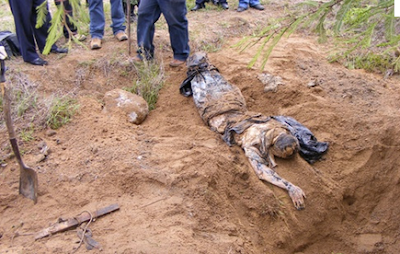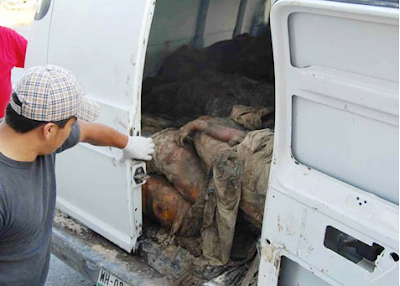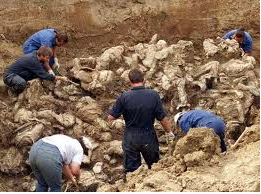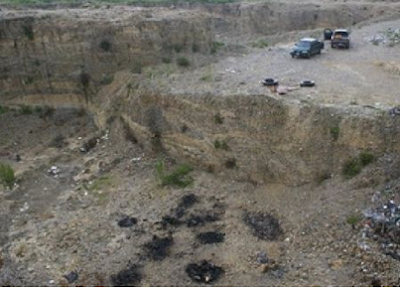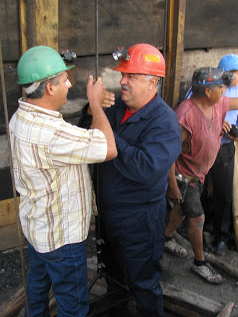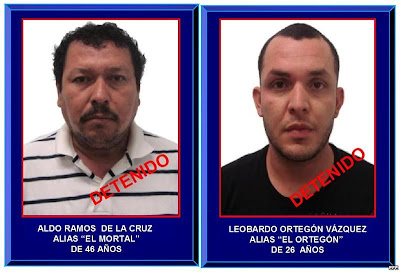Borderland Beat
Sources: Indigo Report and Narco Mexico Drugs Gangs
THE CHILDREN OF THE DEVIL
THE NEW GROUP FORMSThe rupture of the Zetas establishes a new splinter group now with the Gulf Cartel (CDG), Presently, they are in San Luis Potosi, and some regions of Huasteca and Zacatecas.
After the death of Heriberto Lazcano Lazcano, El Lazca, new alliances between the different factions of the zetas have increased.
According to a recent military intelligence report, not only division and confrontations existed among the zetas group lead by “El Lazca” and Miguel Angel Treviño , aka, Z-40, but one of the principal operators regional level, Ivan Velazquez Caballero, aka Z-50 or Taliban, had distanced himself from both of them and once again became a part of CDG. The Taliban was chief of plaza in San Luis Potosi, Guanajuato, Zacatecas, Aguascalientes, Monterrey and parts of Coahuila.
On the other hand, Ivan had tested divisions among the loyal people of Jorge Eduardo Costilla Sanchez, aka El Coss, and the people of Cardenas Guillen. Intelligence information suggested that El Coss – arrested on September 12th by the Navy- had turned in Mario Cardenas Guillen, aka M-1 or El Gordo, and Juan Gabriel Montes Sermeño, aka El Sierra.
"Los Rojos" the faction formerly commanded by the brothers of Osiel has now formed a new group with commands given by “El Taliban”. The new group is using the name of " Los-hijos-del-diablo“, (The sons of the Devil”), with a presence only in San Luis Potosi, some zones of the Huasteca and Zacatecas.
The 42 year old Z-50, , confessed, after being arrested by the Army/navy, that he had started his delinquent career on with of Gulf Cartel and that he had never stopped belonging to that group, according to the same source.
He attributes the responsibility for the deaths of the previous months in San Luis Potosí, to Los Zetas, but denies being part of them. Similarly, rejects joining the Knights Templar and accepts that he had always belonged to the Gulf Cartel. "Since I started working, I started with them," he says.
DEATH OF A SON
In his battle with Z-40, he explains that Z-40 began to act in a psychotic way, “doing shitty stuff and killing many people." But above all, he accuses Treviño of killing his eldest son, Carlos Velazquez.
According to the description of El Taliban, Treviño killed his son in Anahuac. He recognizes that some people had said that his son might be alive, but he says that he doesn’t believe that.
“I know the Zetas very well, they say that they have him alive but they don’t, just as they said with a brother in law”. I even have information that they were burned alive in Monterrey, he remarks.
The kidnapping of the son of Taliban was one of the motives that provoked the clash between the the leaders.
But Taliban, for which PGR offered 30 million pesos to the person that collaborated with his capture, also had clashes with the Zetas of Lazcano, seeking independence and staying with the control of the entities that had been assigned to him by Lazcano.
Unofficial reports refer that Trevino had turned in the Taliban to the authorities, as well as El Lazca and at least a dozen local leaders, with the intention of taking over the remainder of the Zetas in the country.
This entire situation caused the return of Ivan Velazquez to the Gulf Cartel, specifically with the faction of Cardenas Guillen.
On the report, El Taliban said he was native of Nuevo Laredo, Tamaulipas; started his criminal activities stealing cars on his native town and that he has a passport issued by the government of the United States with a picture of him with a mustache that he has not use in a long time.
Ivan Velazquez also denies allying with the Knight Templar, under the orders of Servando Gomez Martinez, aka “La Tuta”.
100 PERCENT SURE
After the PGR announced that they will exhume the remains of one of the parents of Heriberto Lazcano Lazcano, William Brownfield, Assistant Secretary of State for International Narcotics Affairs, said that the United States has no doubts that the stolen corpse is that of "El Lazca".
In an interview with The Guardian, Brownfield said that before the body disappeared that they took enough DNA samples to verify his identity, so it is "almost a 100 percent certainty " that the former leader of Los Zetas was killed.
For its part, the PGR reported that within two to three weeks the results of the genetic sample analysis will be available of samples taken from a relative of Lazcano Lazcano.
However, PGR reiterated that the identity of "El Lazca" is fully confirmed, but it is to comply 100 percent with legal requirements.
To the Secretary, the death of capo on October 7th in Progreso, Coahuila, represents a strong blow to "the most powerful organization in Mexico."
read additional info on the BB forum post by Smoothe the Hustler here





